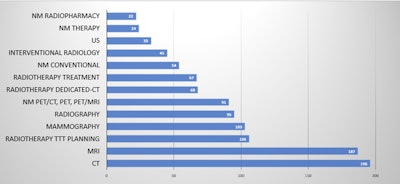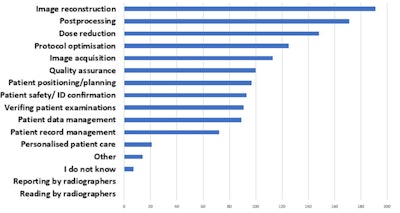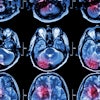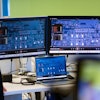
A substantial increase in the clinical implementation of artificial intelligence (AI) is having major impact on radiography practice, a new Swiss survey has shown. Educators must watch events closely to prepare students for the future, says radiographer Mélanie Champendal.
 Mélanie Champendal.
Mélanie Champendal."The future of AI in radiography in Europe looks promising, with increasing adoption and integration of AI technologies in radiology workflows," she told AuntMinnieEurope.com. "Interdisciplinary collaborations will be crucial for the development and implementation of these technologies, and radiographers' unique expertise in technology, clinical practice, and communication can be invaluable in this effort."
With a patient-centered approach and investment in education and training, radiography AI has the potential to greatly improve patient outcomes and reduce healthcare costs, added Champendal, a radiographer and senior lecturer at the School of Health Sciences (HESAV) in Lausanne.
Summary of key findings
Champendal presented the survey results at a radiographers' session during ECR 2023.
It comprised a previously validated U.K. survey translated into French and German and disseminated by professional bodies (ASTRM/SSNM/SSRO/SSR) and social media using snowball sampling to Swiss radiographers (clinical practitioners, educators, researchers, students) and physicians working in radiology (radiologists, nuclear medicine specialists, radio-oncologists). The survey covered five main areas: demographics, AI knowledge, skills, confidence in AI, and perceptions about the impact of AI on clinical practice.
The team collected 243 responses (89% radiographers, 11% physicians) and these revealed that 43% of participants used AI in their practice, although it is not yet disseminated across all imaging modalities. A total of 63.8% of them did not feel confident with AI terminology (63.8%). Importantly, 57.2% saw AI as an opportunity, while 18.5% saw it as a threat.
The specialties/modalities of medical radiology that respondents believe will be most affected by the development of AI are shown in Table 1.
 Specialties and modalities most affected by AI, according to respondents.
Specialties and modalities most affected by AI, according to respondents.Radiographers' daily activities that will be most affected by the development of AI are shown in Table 2.
 Radiographers' daily activities most affected by AI, according to respondents.
Radiographers' daily activities most affected by AI, according to respondents.Opportunities were associated with streamlining repetitive tasks, minimizing human errors, and increasing time allocated to patient-centered care, research, image quality, and patient safety. The most important threats identified by the participants were a reduction in employment (22.6%) and a decrease in the radiographers' expertise level due to automation bias (16.4%).
Furthermore, 68.3% of participants did not feel well trained or prepared to implement AI in their practice, highlighting the nonavailability of specific training (87.6%) in the topic. Overall, 93% of the participants indicated that AI education should be included in undergraduate degrees.
"The survey showed that while over half of participants perceive AI as an opportunity, there was a lack of education and confidence in the technology. Specific training on this topic needs to be implemented to improve practice and understanding on AI," Champendal said.
Shifting remits
Champendal believes that the adoption of AI technologies in radiography will offer new opportunities for radiographers by automating certain time-consuming tasks and allowing them to focus more on interacting with patients.
"AI can also lead to the creation of new roles for radiographers, including in health data management and integrating that data into patient care. However, it's important for administrators to avoid seeing AI as just a tool to increase profits, as this could lead to a decrease in the quality of care by adding more exams or procedures into the time saved by AI. Therefore, it's crucial that AI is integrated into a patient-centered, holistic approach to ensure that care remains high-quality and person-centered," she noted.
The survey, the results for which will be published later this year, allowed HESAV's educators to prepare a thematic day in March 2022 aimed at raising awareness about AI, its impact, and the need for change. Furthermore, sharing this work with other health professionals from HESAV such as physiotherapists and nurses who experienced similar issues has also led to potential future interprofessional collaboration, she noted.
Champendal is also part of a steering committee within the Swiss association of radiographers (ASTRM) which has reflected on the impact of this technology on radiographers' roles as well as the design of an educational program in AI.
Future discussion looks set to focus on the practical implications of AI adoption in radiography, such as how to ensure patient privacy and data security, how to integrate AI into existing workflows, and how to train and upskill radiographers to work effectively with AI, she noted. Another potential topic of discussion is the impact that AI adoption will have on the roles and responsibilities of radiographers, and how they can adapt to these changes.


















